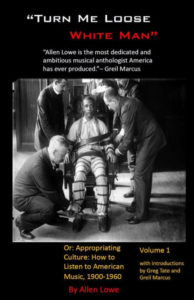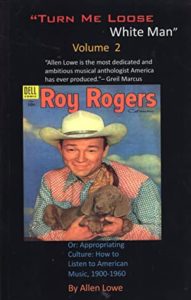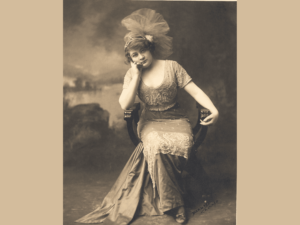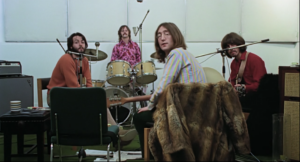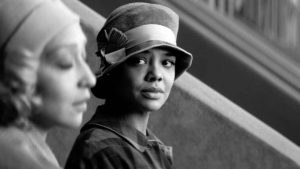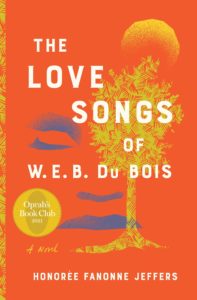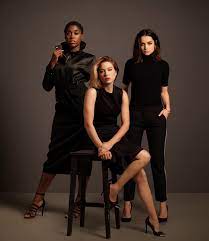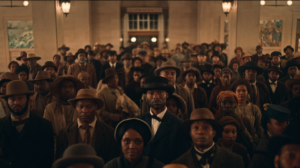Going to live performances for most of the past year was pretty much out of the question for me (with one notable exception cited down below). And there were so many reasons for this that relatively few of them had to do with the pandemic. (Here, for example, was a big one.) As for the brave not-so-new-anymore world of streams and clouds, one wasn’t always sure where one wanted to dump several hours of one’s life into binge-watching. Most evenings found me staring at the available options, all but completely immobilized by the sheer mass of “content” to the point where I frequently found myself saying, “The hell with all this noise!” and go to sports or Turner Classic Movies – or both. Or neither.
So given the myriad, metric tons of possibilities for my favorite things. of 2021, it’s possible that there may be things I’ve neglected, passed by, haven’t caught up with or entirely forgotten about. It may say something about the sheer glut of “content” that my top pick was a 2020 release, but it took me most of this year’s first half to absorb its content, and even longer to assess its impact. It’s still Up On Top, so to speak, because it’s too important to ignore – even if much of the culture, popular or otherwise, pretty much has:
Turn Me Loose, White Man – Now that “critical race theory” has affected state and local elections, driven school boards up a wall and perplexed a mass media that doesn’t quite grasp the concept (or know exactly what it means), it may be time to consider the possibility that we’re all going about this “racial dialogue” thing the wrong way. Mostly we need to stop worrying about making Black and White people “feel better” about being what they are. “Feelings,” after all, are what got us all into this mess in the first place. Somebody needs to break the news, however gently, that none of us is as “Black” or as “White” as we think we are, thanks in large part to an ongoing cultural transaction that began centuries ago with music created by African slaves, propagated by their descendants, absorbed and, yes, appropriated by Whites only to be reinvigorated and even reinvented into new forms by pink and brown alike.
Fellow Americans and worthy constituents, it’s in all our DNA, whether we like it or not. We’re all different, and always the same.
Few people this side of Ralph Ellison’s ghost care to even consider such concepts, booby-trapped as they are with anachronisms, racial slurs, ribald and sacred outbursts swarming and popping on scratchy old 78-RPM records, archaeologic souvenirs of an earlier, exceedingly weirder America.
But Allen Lowe, saxophonist, composer, historian, educator, and cultural gadfly, has long believed that if you gathered as much aural arcana as can be assembled, you could approach something resembling a unified field theory about what makes up the American soul in all its contradictory restlessness and conflicting exuberance.
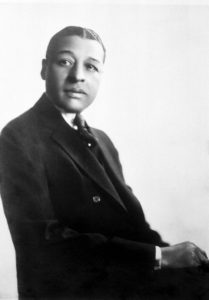
It takes 30 compact discs with almost 900 songs and two volumes of hypertext for Lowe to fashion Turn Me Loose, White Man, a survey of the national sound in all its permutations, blues, bluegrass, gospel, jazz, burlesque, C&W, R&B, rock and rockabilly in so many mutant and mongrelized strains that “genre” loses all meaning. As, Lowe implies, it probably should.
Lowe’s archival efforts have been compared in range to those of such intrepid pioneers as Alan Lomax, Paul Oliver, and Harry Smith. But there are far more idiosyncratic and illuminating patterns Lowe draws from and, in some cases, imposes upon his discoveries. You’ll probably need to follow along, as much as possible, with Lowe’s written text (pure pleasure on its own) to gauge how and why on the first volume he chose to follow, say, the great Black vaudeville comedian Bert Williams’ 1906 recording of his deathless “Nobody” with the more obscure May Irwin’s whimsical 1907 sliver of minstrelsy, “If You Aint Got No Money, You Needn’t Come Around.” Note the use of dialect in the title’s first clause and the grammatical precision of the second. Such tensions are played out in big and small ways throughout this cosmic juke box whose selections cover the 20th century’s first sixty years.
From the shuck-&-jive of Irwin’s “coon song” (defined by Lowe as “that odd phenomenon of progressive melody and harmony, advanced white singing, significant black co-optation and racist bait”) through the 1920s emergence of Black blues queens Bessie Smith and Ethel Waters and a panoply of artists from the widely celebrated (Louis Armstrong, Jimmie Rodgers, Al Jolson, Leadbelly, Count Basie, Bill Monroe, Bing Crosby, Kitty Wells, Charlie Parker, Roy Rogers, Little Richard) to just-below-the-radar legends (Geeshie Wiley, Babs Gonzales, Blue Ridge Quartet, Helen Merrill, Jimmy Yancey, Riley Puckett) and many more obscure or little-remembered artists whose contributions glow like searchlights struggling to be seen through twilight mists.
The zillions of epiphanies and discoveries along the way are too numerous to adequately summarize. The best I can do for now is to mention the shock of hearing the original bust-out 1911 recording of Sophie Tucker’s “Some of These Days,” composed by Black songwriter Shelton Brooks and thus an early example of appropriation; but one whose impact was galvanic enough to give safe passage to Tucker’s stardom well past the 1960s. Another shock: the spare, haunting 1941 recording of “Why Don’t You Do Right?” by the ill-fated blues singer Lil Green that Peggy Lee credited with influencing her own hit version the following year. And on and on…
Whether things should have turned out this way (and artists like Lee are the ones least deserving of blame) shouldn’t be a matter of concern to contemporary listeners anxious to throw as many red “racism” flags at the past as can be flung. (You’re better off blaming the Southern segregationist bloc in Congress for ruining what could have been a nice party for all.) The main point, as Lowe continually asserts, is that such push-pull dynamics, this braiding of cultures on record, as it were, didn’t validate or encourage racial separation. It was very much the opposite, even when the lyrics were far from conciliatory or respectful to Black people earlier in the century.
Lowe’s magnificent treatise comes to us as a gift we’ve needed for a long time, though this era being whatever it is, I don’t know whether the skittish, hopelessly judgmental masses who now dominate social media are prepared to deal with its sheer weight or its propensity for nuance, irony, wit, and surprise. For the moment, I choose to be optimistic enough to speculate that when these masses are ready for Turn Me Loose, White Man, it’ll still be around somewhere to both explain and evoke a world where the Light Crust Doughboys are as “ivey-divey” as the Sun Ra Arkestra.
The rest, as usual, are in no particular order:
Rita Moreno – You know how you have those people in your life or in your personal pantheon of whom you always say, “If you don’t like —-, then I don’t want to know you”? Well, Rita Moreno has for most of my life been at or near the top of that list for me and it was as much for what she did when she was Being Herself on talk shows and interviews as for when she exploded on-screen in the original 1961 film adaptation of West Side Story and collected her supporting-actress Oscar the following year. As most of the known universe knows by now, she’s also in the Steven Spielberg-Tony Kushner version and not a few people believe she can win the same Oscar sixty years after she got her last one. It may not matter much either way as she’s practically a charter member of the EGOT sisterhood. What does matter is that this year, at a supernaturally energetic 90 years old, Moreno has been given her proper due and then some; not just with the new West Side Story (of which she is also a producer), but this past year’s release of Just a Girl Who Decided to Go for It, a PBS documentary about Moreno that gained viewership when it streamed on Netflix. She made being Rita Moreno look easier and much more fun than it likely was, especially when struggling through her dispiriting and (especially) demeaning early years as a studio ingenue. From those experiences, she developed superior emotional intelligence and fervent empathy towards all who struggled as she did. At about the five-minute mark of this interview clip, she talks about how when working as a series regular, she would go out of her way to make guest actors feel more welcome in unfamiliar, and in some cases, less hospitable surroundings. It’s not in the documentary, but it’s yet another reason, as if any more were needed, to cherish her forever.
The Beatles: Get Back – As Samuel Johnson didn’t say, but would have, whosoever gets bored from watching four active imaginations pooling their resources to make music in a studio is bored with life. Eight hours of footage didn’t seem an exceptionally long time to get embedded in a handful of hard day’s nights in the studio. Much as they may have wanted to get back, so to speak, to live concerts, their basic instincts turned out right: they were better together in a studio than they would have been on stage in their latter days as a group. (The guess here is that if they’d stayed on the road any longer than they did, one or more of them would have gotten physically, seriously hurt as the decade they helped create began curdling like cream left open too long on the patio.) Even with all the tiffs, tantrums, and tensions sharing the room with them, the guys were in their safe space, as capable of mutually assured generosity (still loving the sequence where George is helping Ringo erect a bridge for the latter’s “Octopus’s Garden.”) as of sticking tiny needles into each other’s self-esteem. All of which happens when you’re just “hanging out” and this may well be for all time the sine qua non of cinematic “hangs.” The sainted Cassavetes couldn’t have pulled it off if he’d staged everything in advance: he could never have drawn up those two “what’s-all-this-then?” constables trying in vain to get the lads to shut down their rooftop concert. Questions for further study: Can we be sure Phil Spector didn’t put the old lady up to calling the cops? And where, in all this footage, was Phil Spector anyway?
Passing – With episodic television now firmly in the center of popular storytelling, it’s perhaps inevitable that some of the year’s most critically-lauded feature films tended to leave more of their narrative details to the imagination, much as producers, directors and writers tried to do in the mid-20th century as commercial television squeezed movie houses into tight corners. Jane Campion’s award-winning western noir The Power of the Dog was a revelation to many for its calculated ambiguity. I preferred Rebecca Hall’s directorial debut if only for the daring aesthetic and personal choices she made in adapting a Harlem Renaissance classic and thus proving (a.) that Nella Larson has earned serious reconsideration as a major American novelist and (b.) judging from some of the reactions to the movie, there remain some things about skin color we feel uneasy about.
Samantha Fish – So let me tell you how this happened: I was wandering around YouTube this past summer in search of vintage fifties black-and-white videos of the great country-rockabilly pioneer Wanda Jackson to show a friend of mine what she’d been missing. In the process, whatever algorithm mediates such things kicked up more recent live performances from a guitarist/vocalist I’d never heard before. Among the many things that led me from the Telluride thing was this solo recital above for New Orleans’ fabled WWOZ from a year ago when things were too locked down for live audiences.
Damn! I said to myself. Where’d she come from? I then asked myself.
Born 33 years ago this coming January in Kansas City, Fish’s been performing kickass blues, soul, and country rock for more than a decade and has recorded seven albums under her name, the latest of which, Faster, came out this past September on the Rounder label. She plays several different types of guitar at several different speeds and may well be the master of the amplified cigar-box. With composure and conviction, she can belt, purr, growl, and shout like a grizzled juke-joint veteran, a swampland Marilyn Monroe with a surfeit of sang-froid. She’s always on the move from one medium-cool venue to another, her smitten fans following her trail and hanging on her every well-wrought lick and riff. By autumn, I was so enamored that when I found out her tour would land at Philadelphia’s Union Transfer on my birthday night, I gave her concert as a present from me to me as the first live music show I’d attended since lockdown. I keep wondering why this woman isn’t ruling the world. One answer, the best I can come up with for now, is that the world as it is now constituted would need to be at once older and newer to deserve her reign. As things stand now, she already travels the world, finds love wherever she goes, and, as The Fugs would say, is doing all right.
Tear Across the Dotted Line – In a time like ours where narcissism and its toffee-nosed sibling solipsism rule the populace regardless of ideology, anything that chips away at what legendary basketball coach Pat Riley famously labeled “the Disease of Me” is worth your time. I’m certainly glad for the time I spent absorbing this six-episode animated series by the Italo-Franco cartoonist Zerocalcare, who also voices (in the Italian-language version) his cartoon alter-ego Zero, a snarky, self-absorbed, and self-sabotaging professional illustrator whose personality is best expressed by the giant orange armadillo who hangs around as his sardonic Jiminy Cricket: “You’re a black belt at dodging life.” Exhibit A for the armadillo’s diagnosis is Zero’s fraught, constricted relationship with Alice, a shy, enigmatic young woman with whose feelings Zero plays an exasperating game of keep-away, until tragedy forces him to confront his own mangier inhibitions. On this description alone, you may be inclined to take a hard pass. But there is genuine charm, wit, and ingenuity in execution, and it wins your heart, fairly and honestly, at the end, even if you’re left feeling that Zero would still be more annoying without the armadillo tagging along.
The Love Song of W.E.B. DuBois – “We are the earth, the land. The tongue that speaks and trips on the names of the dead as it dares to tell the story of a woman’s line. Her people and her dirt. Her trees and her water.” If you’re going to try writing a “great American novel,” you better come at it with a killer lead, especially if what follows is almost 800 pages long. Award-winning poet Honorée Fanonne Jeffers fulfills this first obligation in her first novel, an audacious, dense-star potpourri of bildungsroman, multi-generational history, socio-political inquiry and, as the title implies, love story. The coming-of-age story belongs to Ailey Pearl Garfield, habitually impertinent, intensely probing, and passionately engaged in the pursuit of her family background with all its upheavals, hardships, duplicities, and hard-won victories. For those who wonder if going so long and deep is worth the trouble, I yield the floor to culture critic Davin Seay who in 1982’s The Catalog of Cool posed the rhetorical question, “Ask yourself…you looking for something to do while the coffee cools or do you want to read a book?”
Lashana Lynch, Ana De Armas & Lea Seydoux – No Time to Die took its sweet time getting its business done, making Daniel Craig’s long goodbye to the James Bond franchise seem even longer than necessary. Still, the movie’s generosity of spirit towards its cast and its audience compensated for any number of longueurs and Craig’s comfort level with the 007 persona was never more evident, or more disarming, than it was on his way out. What also helped was a dazzling trio of what would have once been branded “Bond girls” for convenience’s sake, though somehow, they each seem emblematic of Things to Come rather than What Once Was. We’ll start with Lynch as Agent Nomi of MI-6, who in the wake of Bond’s resignation from the secret service, was granted “license to kill” status and made the most of it with a skill set formidable enough to get her out of any jam the franchise could conceive. Seydoux, reprising her role from SPECTRE as Bond’s enigmatic love interest Madeleine Swann, got to show additional bad-assery in an unexpected place beyond Bond: as the truculent prison guard who doubles as an artist’s nude model in Wes Anderson’s The French Dispatch. Last, and by no means least is Armas, who made perhaps the biggest splash with critics and audiences as Paloma, the callow, but poised CIA agent, whose one action set piece with Craig’s Bond showed she could take command of the screen on her own. When Armas’s Paloma split for Parts Unknown, you felt she’d taken much of the movie’s vitality with her. It’s been whispered that Paloma will be given her own movie as will Lynch’s Nomi. It’d be OK with me and I suspect millions of others if they paired up somehow, if the world could withstand so much magnetism from the same place.
The Underground Railroad – I’ve had my say and then some about Barry Jenkins’s masterly, unsparingly corrosive adaptation of Colson Whitehead’s antebellum magical-realist picaresque. The only thing I can add is that I still believe there’s been nothing like it on television before. If it weren’t so tough to watch the first time, I might be able to say for sure after a return viewing. And I don’t know if those faint whispers about a second season are or should be for real. It’d be intriguing to see Jenkins, or somebody else, try.
Succession – For those who haven’t watched the third season, or for that matter, its two predecessors (and what are you all waiting for anyway?), I’ll try hard not to spoil anything for you by being of no real help whatsoever. Moving stuff around without changing anything about their miserable selves: that’s what being a member of the Roy family is all about, beginning with Mister “Fuck Off “himself, his satanic majesty Logan Roy (Brian Cox). Part of the reason Season 3 reached a new peak in dialogue was its many cogent deployments of the f-word as verb, adjective, noun, and adverb. beginning with what retains pole position as Snap of the Decade: not-as-smart-as-she-thinks sister Shiv (Sarah Snook) telling her not-as-hep-to-the-jive-as-he-thinks-younger bro Roman (Kieran Culkin): “Oh, you love showing your pee-pee to everybody, but sooner or later, you’re actually going to have to fuck something!” Then there’s Shiv’s not-as-pliant-as-he-seems husband Tom (Matthew Macfayden) telling nowhere-near-as-cool-as he-thinks renegade son Kendall (Jeremy Strong) why he can’t join the latter’s uprising against Big Daddy: “I don’t mean to be insulting, but having been around a bit, my hunch is you’re going to get fucked. Because I’ve seen you get fucked a lot. And I’ve never seen Logan get fucked once.” In the end, there’s Logan (and, as Tom says, this shouldn’t be a spoiler to those of us who’ve “been around” these jackals since 2018) proclaiming “I! Fucking! Win!” closely followed by Shiv’s doleful last words till next season, “Mom fucked us.” That’s more than enough fucking “fucks” for you to begin piecing together where things go from here. And you can count on so much more — and potentially worse — fuckery to come.
